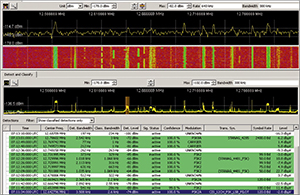Search and rescue (SAR) hoax callers cost U.S. law enforcement and security agencies more than $1 billion annually, sometimes claiming lives in the process. The needless deployment of responders can jeopardize innocent civilians as well as professional personnel while drawing resources away from actual emergencies.
“It’s a virus affecting not only the Coast Guard but a number of emergency services across the country,” according to Lt. j.g. Gianfranco Palomba, project manager for the SAR Hoax Call Project at the Coast Guard Research and Development Center and Coast Guard Investigative Services. “The busiest centers with the largest number of suspicious or serial callers receive 20-plus calls (a year); other terminals receive 10 or more in as many months.”
Palomba said the perpetrators range from radio callers on vessels to shore-based cellphone callers, with each call potentially resulting in resource misdirection. “It threatens commercial vessel operators as well as recreational mariners. It can be literally life and death,” Palomba said.
To deter and prosecute SAR hoax callers, the Coast Guard has been working on voice forensics with the Language Technologies Institute at Carnegie Mellon University. Building on decades of analyzing speech, CMU’s voice specialists are developing the science and data to enable the profiling of hoax callers. Such profiling results in an estimation of a speaker’s personal traits and physical surroundings from their voice record.
While it is similar to fingerprinting, it is not a fingerprint — nor is it DNA. “At this stage, when considering profiling by voice forensics, think ‘describing’ rather than identifying potential perpetrators by voice,” said Dr. Rita Singh, CMU team leader.
Voice forensics focuses on the core algorithmic aspects of computer speech recognition. Singh’s research has determined that voices can help identify personal characteristics beyond gender, race and age, including a person’s education level, socioeconomic status and sociological trends in the population. Such profiling is especially useful for law enforcement in detecting hoax callers, particularly deliberate decoy callers.
Challenges involved in voice profiling include, but are not limited to, the short duration and typically poor quality of the calls. Perpetrators who deliberately disguise their voice are also a problem. However, voice forensics has the capacity to isolate micro-characteristics or features, negating an actor’s ability to disguise certain “bio-relevant” traits. The speaker, even in the most extreme forms of voice disguise, does not have voluntary control over his voice at such imperceptible levels.
A certain level of legal veracity must be achieved if the science is to have prosecutorial value, which is the project’s ultimate goal — hoax calls are a federal crime in the United States. To be acceptable in a court of law, scientific results must be based on sufficient facts or data, be a product of reliable principle and methods, and the methods must be reliably applied to the facts of the case.
While acknowledging that there is much work to be done, Singh said much has been learned. She assures that the techniques of CMU’s Language Technologies Institute “are accompanied with quantitative measures of confidence.”

